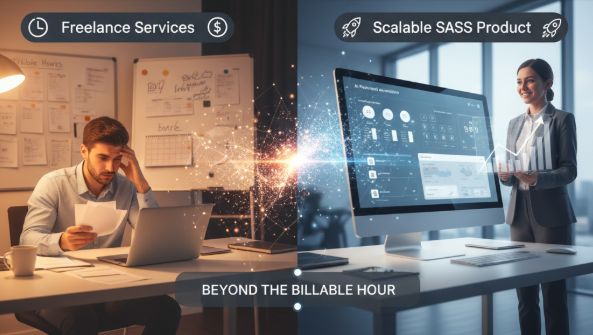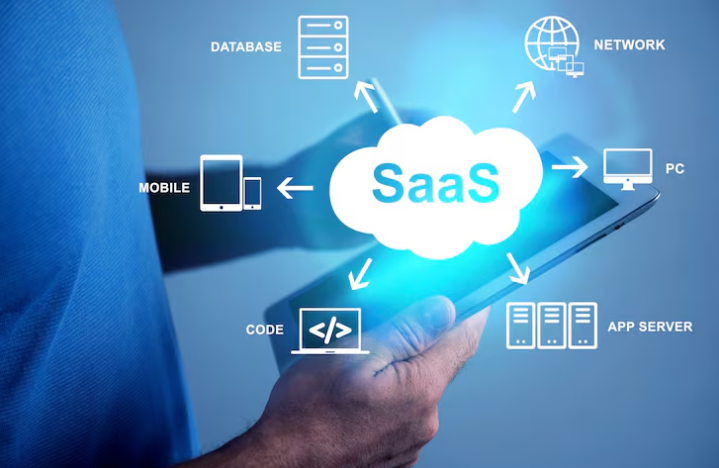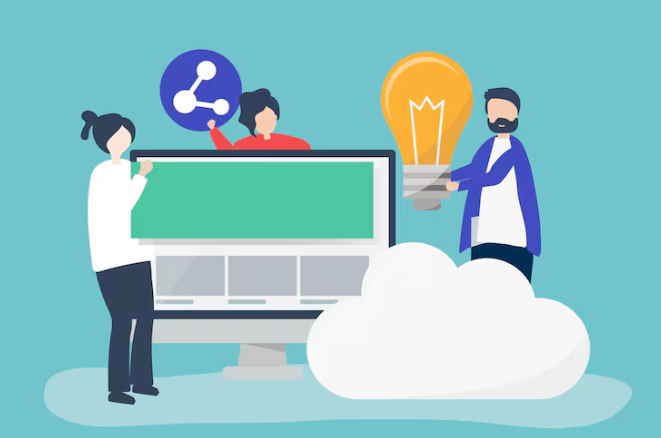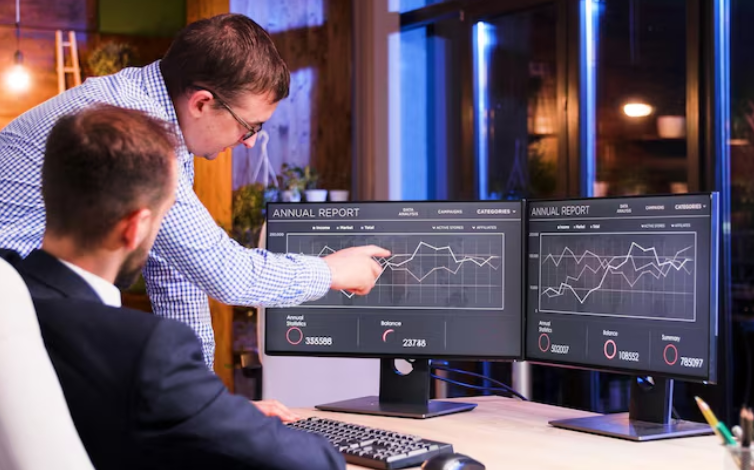Why Ditch the Hourly Grind? The Compelling Case for Productizing Your Services

Breaking Free from the Time-for-Money Trap
The traditional freelance model often traps talented individuals. It creates a relentless time-for-money exchange. You literally sell your hours. Your income directly links to the time you work. This means your earning potential faces a hard ceiling. It is dictated by the hours you can physically dedicate. Even highly skilled freelancers face limits; there are only so many hours in a day. “This model inherently limits your growth, creating an invisible cap on your income that no amount of effort can truly overcome.” This path often leads to burnout and blocks true financial freedom. You remain forever on the clock, always chasing the next billable project.
This outdated approach fails to reward your increasing expertise. In fact, the better and faster you become, the less you might earn under an hourly rate. This is why productizing your services offers a powerful escape. By transforming your knowledge into a scalable product, you decouple your income from your time investment. “You shift from selling hours to selling outcomes, allowing you to serve more clients and generate revenue far beyond a 24-hour day.” This strategy lets you leverage your expertise repeatedly. It builds a sustainable business that rewards value, not just time.
Unlocking Scalability and Recurring Revenue Streams
Productizing your freelance services fundamentally transforms your business model. “You stop trading hours for dollars, which limits your earning potential.” A scalable SaaS product lets you serve many clients at once. Imagine a single software tool. It can solve a common industry challenge for hundreds or thousands of users. This key shift significantly grows your revenue. Your direct workload does not need to increase proportionally. This truly frees you from one-to-one client work.
This powerful transition also unlocks consistent recurring revenue streams. You stop chasing new projects. Instead, clients subscribe to your service monthly or annually. This subscription model provides a highly predictable income flow. It eliminates the stressful “feast-or-famine” cycles common for freelancers. Leading SaaS companies prove the value of this predictability. Adobe’s Creative Cloud is a prime example. “Predictable income builds tremendous stability and enables effective long-term business planning.” It creates a much stronger financial foundation for your business.
Building a Valued Asset, Not Just a Job
When you provide freelance services, you essentially trade your time for money. This means your income stream is directly tied to your working hours. The moment you stop, your earnings cease. This model inherently limits your income potential and long-term financial security. However, by transforming your expertise into a scalable SaaS product, you build something far more enduring. “You shift from merely earning a wage to constructing a valuable, tangible business asset.” This asset continues to generate revenue independently of your direct, hourly labor. It grows in worth, providing a path to genuine financial independence and security.
This productized service represents true long-term value. Unlike billable hours, which vanish after delivery, a SaaS solution accumulates intrinsic worth. It comprises intellectual property, a growing customer base, and a repeatable revenue model. These elements give it market value far beyond your immediate effort. Think about its potential saleability; a successful SaaS business can be a significant financial exit. This strategic pivot allows you to create lasting wealth, not just a temporary job.
Enhanced Predictability and Work-Life Balance
The hourly model often traps freelancers in an unpredictable cycle. Income can fluctuate wildly, leading to stressful “feast or famine” periods. By productizing your services into a scalable SaaS product, you unlock predictable revenue streams. Subscriptions mean consistent monthly or annual income, moving away from the constant chase for new billable hours. “This fundamental shift allows for far greater financial forecasting and stability.” You can better plan for the future, invest in growth, and reduce income-related anxiety significantly.
The chase for billable hours severely impacts personal time. Freelancers often work long, inconsistent hours, making a genuine work-life balance feel impossible. A SaaS product separates your income from your direct time input. With upfront development and ongoing automation, the product generates value even when you are not actively working. “This grants you unparalleled time freedom and the ability to reclaim your evenings and weekends.” You can focus on strategic growth, enjoy personal interests, or take a much-needed break without financial penalty, truly enhancing your quality of life.
From Bespoke to Blueprint: Decoding the Freelance-to-SaaS Transformation

Defining ‘Productized Service’ vs. ‘SaaS Product’: Key Differences
A productized service transforms your specialized freelance skills into a standardized offering. “This means you create a fixed-scope, repeatable service with clear deliverables and predictable pricing.” Imagine a “Starter Website Design” package or a “Monthly Blog Post Creation” plan. While this model greatly improves efficiency and allows for better profit margins than bespoke work, it inherently still requires direct human effort for each client’s delivery. You’re selling a defined *service* in a repeatable format.
Conversely, a SaaS product is Software as a Service. It’s an automated software solution delivered online, typically via a subscription model. “Its core distinction is extreme automation and self-service, eliminating the need for human intervention in core delivery.” Users interact directly with the software. Think of tools like Mailchimp for email marketing or Loom for video messaging. A SaaS product scales by adding more users without significantly increasing per-user operational costs. This operational leverage is a key differentiator. It truly sets SaaS apart from productized services.
Identifying Your Niche: What Services Are Ripe for Productization?
To pinpoint services ready for a freelance-to-SaaS transformation, closely examine your current client work. What tasks do you repeat across multiple clients? “Identifying recurring pain points and repetitive tasks is your first critical step.” For instance, if you consistently set up detailed onboarding flows or implement specific analytics configurations for different businesses, this indicates a strong pattern. These standardized processes are ideal for moving from bespoke service delivery to a replicable, productized offering.
Beyond repetition, evaluate your services for scalability and broad market demand. The most promising candidates offer a clear, measurable outcome that doesn’t require constant, unique human intervention from you. Think about common business needs. Services like automated lead qualification, personalized report generation, or content calendar management often fit this profile. “These solutions address a widespread need and can serve many users with minimal incremental effort, making them perfect for a scalable SaaS product.” Your expertise becomes accessible to a much larger audience.
Essential Characteristics of a Successful SaaS Offering
A successful SaaS offering begins with inherent scalability. Your product must efficiently serve a growing customer base. It should not demand a linear increase in your workload as it grows. “Automation is key to freeing your time and maximizing your reach.” Think about how your service can be standardized and delivered consistently. It also needs a clear, repeatable value proposition. Customers must quickly grasp the problem your SaaS solves and its unique benefits. This clarity drives adoption. It reduces the need for extensive manual sales efforts. Your offering should address a specific, recurring pain point for a broad audience.
The cornerstone of a robust SaaS model is recurring revenue. This means subscribers pay regularly. It fosters predictable income streams. This is a major departure from project-based freelance work. Your product must be easy to use and intuitive. It should require minimal onboarding or custom setup. A complex interface often leads to high churn rates. “Excellent customer support, often automated through self-service options, builds trust and customer loyalty.” Proactive communication and readily available resources help users succeed independently. These elements transform a service into a sustainable, attractive product.
Inspiring Real-World Examples: Transformations in Action
The freelance-to-SaaS transformation isn’t just theory; it’s a proven path to success. Consider Nathan Barry, a designer and writer who needed a better email marketing solution for his audience. He built ConvertKit, initially for himself. This personal tool quickly evolved into a powerful email marketing SaaS platform. Today, ConvertKit serves thousands of creators worldwide. It demonstrates how a custom solution for one’s own business can become a valuable scalable product for many. Barry successfully moved beyond billable hours, building recurring revenue with far greater reach.
Another compelling example comes from the world of digital marketing. Imagine a freelance SEO consultant constantly performing complex site audits for clients. They might develop an internal script or tool to streamline this process. Eventually, this bespoke solution can be refined and offered as an automated SEO audit SaaS. This product allows other consultants or businesses to run instant, data-driven analyses. “This shift frees the expert from repetitive tasks, enabling them to serve a wider market with a standardized, valuable tool.” Such scalable SaaS products unlock new revenue streams. They also position the founder as an industry innovator. These examples prove the immense potential in productizing your specialized freelance skills.
Crafting Your SaaS Blueprint: Strategic Steps for a Smooth Transition

Validating Your Product Idea: Market Research and Demand
Before you fully commit to building your SaaS product, rigorous market research is essential. Do not assume your current freelance clients represent the entire market. “You must validate your product idea before significant investment.” Talk to a broader audience who face the problem your service solves. This helps pinpoint specific pain points and confirms a genuine demand for your automated solution. Consider creating a landing page with a waitlist or a simple explainer video, much like Dropbox did, to gauge interest and test messaging without writing a single line of code.
This validation phase involves more than just asking “Would you use this?” Dive deep into potential user needs and existing solutions. Conduct surveys, interviews, and analyze competitor offerings to identify gaps your scalable SaaS product can fill. Understanding pricing sensitivity and perceived value early on is also critical for your future business model. This data-driven approach reduces risk, saves resources, and ensures your offering truly resonates with your target market, setting a strong foundation for your transition.
Defining Your Minimum Viable Product (MVP) and Core Features
Transitioning your freelance services into a scalable SaaS product critically depends on defining your Minimum Viable Product (MVP). An MVP is the most streamlined version of your product, delivering core value to solve one specific problem. It identifies the absolute essential function your service provides. “Focus on solving the single most painful problem for your target audience with minimal features.” This allows you to get to market quickly, preventing resource waste and speeding up your learning curve for your new scalable SaaS product.
Next, pinpoint the core features essential to your MVP’s success. These are the foundational elements that allow your scalable SaaS product to deliver its central promise effectively. “Resist the urge of feature creep.” This common pitfall can overwhelm early development, inflate costs, and delay your market entry. Instead, focus only on functionalities that directly address your target audience’s most pressing pain points. Continually gather feedback from early adopters to guide future iterations and validate your direction. Your initial product thrives on simplicity and effectiveness, not exhaustive functionality.
Pricing Strategies: Value-Based, Tiered, and Freemium Models
“Effective pricing is crucial when transforming your freelance services into a scalable SaaS product.” First, explore Value-Based Pricing. This model sets prices based on the direct benefits your software delivers to users, not just your costs. It perfectly aligns with the high value you previously provided as a freelancer. Next, implement Tiered Pricing. This involves offering distinct feature sets or usage limits at different price points. “This allows you to cater to diverse customer needs, from basic users to advanced enterprise clients, maximizing your market potential.”
Alternatively, a Freemium Model can be a powerful acquisition tool. Offer a core, free version of your product with limited features or usage. This entices users to experience its value firsthand. Once they recognize the benefits, they are more likely to upgrade to paid premium tiers for enhanced capabilities and support. “Strategic pricing ensures your scalable SaaS product attracts and retains customers while reflecting the true worth derived from your expert services.” Careful selection and testing of these models are crucial for sustained growth.
Building a Strong Brand Identity and Compelling Messaging
Your existing freelance reputation offers a valuable starting point. However, transitioning to a scalable SaaS product demands a distinct and robust brand identity. Clearly define your product’s core values, mission, and visual aesthetic. Consider your ideal customer closely: What are their aspirations? What unique problem does your SaaS solution solve for them? “A well-defined brand not only differentiates you but also fosters immediate trust and recognition.”
Once your brand identity is solid, develop compelling messaging that effectively communicates your value. Move beyond features; articulate the direct benefits your SaaS product delivers. What specific pain points does it alleviate? What transformation does it offer? “Your messaging must be clear, concise, and resonate deeply with your target audience’s challenges and goals.” Highlight your unique value proposition (UVP) with simple, human-centric language. This clarity transforms interest into conversion for your growing scalable SaaS product.
Bringing Your SaaS to Life: Development, Launch, and Beyond

Choosing the Right Technology Stack and Development Approach
Choosing the right technology stack is crucial for your scalable SaaS product. This involves selecting programming languages, frameworks, databases, and cloud infrastructure. Popular choices include Python with Django, Node.js with React, or Ruby on Rails. These offer robust ecosystems. “Consider scalability, developer availability, and long-term maintenance when making your decision.” A well-chosen stack helps your product grow without costly re-writes. It efficiently serves users as demand increases. For example, many successful startups leverage cloud platforms like AWS or Google Cloud for their inherent flexibility and global reach.
For development, embrace an agile, iterative approach. Start with an MVP (Minimum Viable Product) to launch quickly. Gather real user feedback. This allows you to refine your SaaS product based on actual market needs. It minimizes initial risks. “An iterative approach ensures your product evolves in sync with customer demands.” You can build your MVP using in-house teams, freelance developers, or even no-code/low-code platforms like Bubble. This works for simpler applications. Continuous improvement is key to long-term success.
Automating Workflows and Streamlining Customer Onboarding
Transitioning from freelance services to a scalable SaaS product truly hinges on smart automation. Identify repetitive tasks that once consumed your freelance hours. Think about client communication, data entry, report generation, or initial project setup. Automating these workflows frees up your valuable time. Platforms like Zapier or Make.com (formerly Integromat) connect different tools seamlessly. “This drastically reduces manual effort, improving operational efficiency.” Your business can then grow without hiring more staff for every new client.
A seamless customer onboarding process is equally vital for SaaS success and long-term retention. A smooth start ensures users quickly grasp your product’s value. This significantly boosts customer satisfaction. Automate welcome emails, tutorial sequences, and initial setup guides. Tools like Intercom or HubSpot personalize the onboarding journey with guided tours or in-app messages. “A well-structured onboarding reduces churn and converts new sign-ups into active, paying customers.” This makes customers feel supported and confident in their choice from day one.
Marketing Your SaaS: From Early Adopters to Broader Audiences
Marketing your scalable SaaS product begins with a laser focus on early adopters. “These are the innovators eager to try new solutions.” Seek them out in niche online communities, industry-specific forums, and targeted social media groups. Offer them exclusive beta access or a special introductory rate. Their feedback is incredibly valuable. This group provides crucial insights for product refinement. They also become your first brand advocates, sharing their positive experiences organically. Think about how tools like Slack or Dropbox started with focused early community engagement before broad adoption.
Once you have early traction, expand your reach to broader audiences. Implement a multi-channel marketing strategy. This includes robust content marketing, creating helpful blog posts and guides. Focus on SEO to ensure your product appears in relevant searches. Consider targeted paid advertising on platforms like Google and social media. Explore strategic partnerships with complementary services. Public relations can also generate valuable media coverage. “Consistently track your marketing efforts with analytics to optimize spend and messaging.” Show how your SaaS product solves a clear problem for your target market.
The Power of Customer Feedback, Iteration, and Continuous Improvement
Your scalable SaaS product isn’t built in a vacuum. Customer feedback is your most valuable asset, providing direct insights into user experience. “It helps you truly understand user needs and pain points.” Actively seek input through surveys, user interviews, and support tickets. Early feedback guides your development decisions, preventing costly features nobody wants. This process ensures your product solves real problems for your target audience. Think of it as a crucial compass, constantly directing your efforts towards market needs.
This feedback fuels iteration. This means making small, frequent improvements based on what users tell you. Don’t wait for a perfect product; launch, listen, and evolve quickly. “Successful SaaS products are never truly ‘finished’—they are continuously refined.” Companies like Mailchimp or HubSpot constantly update features based on user data and requests. Embrace this cycle of continuous improvement to keep your product relevant and competitive. This agile approach ensures your scalable SaaS product always meets evolving market demands and user expectations.
E-E-A-T in Action: How Your Freelance Journey Fuels SaaS Credibility

Showcasing Your Deep Industry Experience and Problem-Solving Skills
Your freelance journey offers a rich source of authentic industry experience. You have spent years solving client problems and seeing common issues directly. This deep knowledge is essential for creating an effective SaaS product. “It means your solution comes from real-world needs, not just ideas.” For example, a freelance web developer truly understands why small businesses struggle with slow websites. This insight directly shapes a performance optimization SaaS.
Also, your history of solving problems greatly increases your SaaS credibility. You delivered results for clients. This proven success transfers straight to your product. You truly understand the small details and how users work because you have experienced them. “This deep understanding creates vital trustworthiness with future users, making your scalable SaaS stand out from others.” Your freelance background shows you can build solutions that genuinely work.
Building Trust Through Transparency, Case Studies, and Testimonials
Your freelance journey provides crucial backing for your scalable SaaS product. Transparency builds immediate trust with potential users. Be open about your product’s development, features, and future plans. This candid communication roots in your honest client interactions. It showcases your deep expertise and authoritativeness. “It signals to users that you prioritize integrity, making your offering truly credible.” Such openness helps users understand and embrace your vision. This approach lays a solid foundation for your SaaS.
Transform your past freelance successes into powerful case studies. Detail the specific client problems you expertly solved. Explain the strategies you implemented. Show the clear, measurable results achieved. For instance, illustrate how you boosted a client’s website traffic by 30%. Or, highlight how you improved their lead conversion by 15%. Complement these with authentic testimonials directly from happy clients. These personal endorsements powerfully validate your experience and trustworthiness. They prove your product’s value. This attracts more users to your innovative SaaS solution.
Establishing Authority in Your Niche with Unique Insights
Your extensive freelance journey offers a distinct advantage in building authority within your niche. You’ve gained direct exposure to countless client challenges and unmet needs. This hands-on experience moves beyond superficial understanding. It helps you uncover truly unique insights often missed by generic market research. “You understand the nuances of specific pain points because you’ve solved them firsthand, repeatedly.” This deep practical knowledge becomes the bedrock of your specialized credibility.
These hard-won insights are incredibly valuable for developing a scalable SaaS product. They help you craft solutions that genuinely resonate, addressing real problems with precision. By demonstrating this profound understanding, you naturally enhance your E-E-A-T credibility. Your future customers will recognize your product isn’t just a theoretical idea. “It’s forged from practical experience and deep, firsthand understanding.” This positions your SaaS product as a highly trusted and effective tool, built on proven solutions and genuine expertise.
Fostering a Community Around Your Product and Brand
Your freelance background gives you a unique edge in building a vibrant product community. You’ve already cultivated relationships and deeply understand client needs. This direct experience lets you design a scalable SaaS product that genuinely solves problems. When users see their challenges directly addressed, they feel understood. This shared understanding forms the bedrock of a strong community. “Engage with your early adopters; they are your first advocates and a vital source of feedback.” Their trust in your expertise validates your transition from services to a product business model.
Nurturing this community involves active engagement. Host live Q&A sessions or set up a dedicated online forum for your users. Encourage them to share successes and challenges. Listen carefully to their suggestions; this shows you value their input. This collaborative approach not only improves your SaaS product but also builds immense trustworthiness. People are more likely to support a brand that listens and evolves with them. This genuine interaction showcases your continued expertise and makes your brand more authoritative. A thriving community becomes a powerful marketing tool, fueled by authentic user testimonials.
Navigating the SaaS Landscape: Challenges, Pitfalls, and Long-Term Success

Common Obstacles: Technical Debt, Competition, and Burnout
Shifting from client services to a SaaS product introduces significant hurdles. A primary concern is technical debt, which accumulates when quick fixes are prioritized over robust, scalable solutions. This leads to future development costs and slows innovation, much like building a house on a weak foundation. Ignoring it can cripple growth. Simultaneously, the SaaS market is intensely competitive. Thousands of new software solutions launch annually, making it vital to carve out a unique niche. “Your unique value proposition and understanding customer needs are crucial for standing out amidst the noise.” Without clear differentiation, even a great product can struggle for visibility.
Beyond technical and market challenges, burnout is a pervasive threat for founders. The demands of developing, marketing, and supporting a SaaS product are continuous, unlike the project-based nature of freelance services. This “always-on” environment often leads to long hours and immense pressure, exhausting even the most dedicated entrepreneurs. “Prioritizing your mental well-being and building a strong, supportive team are essential for long-term success.” Sustainable growth strategies, rather than relentless chasing of rapid expansion, are key to navigating these common obstacles without sacrificing yourself or your vision.
The Importance of Continuous Innovation and Feature Development
The SaaS landscape moves at an astonishing pace. Stagnation is a virtual death sentence for any aspiring scalable SaaS product. Continuous innovation is not optional; it’s fundamental. “Truly successful SaaS platforms never stop evolving, constantly adapting to user needs.” They actively gather user feedback and respond quickly to shifting market demands. This proactive strategy keeps your offering fresh. It also ensures your product remains indispensable in a crowded market.
Regular feature development is about more than just adding new tools. It focuses on solving emerging problems for your customers. This commitment significantly boosts customer retention and consistently attracts new users. Think of how Slack regularly rolls out new integrations and features. Implementing agile development cycles allows for frequent, incremental updates. Beta testing new features with a select group is a smart approach. This strategy helps you maintain a strong competitive edge and secures your long-term success.
Scaling Your Operations: Support, Sales, and Marketing Teams
Shifting from a freelance service to a scalable SaaS product demands new operational strategies. Initially, you personally handled all client interactions, from sales to support. As your user base grows, this becomes unsustainable. You must build dedicated teams for customer support, sales, and marketing. “Ignoring this need early can lead to user dissatisfaction and stalled growth.” Effective support requires clear processes, self-service FAQs, and robust ticketing systems, moving beyond ad-hoc responses.
Investing in these teams is crucial, not just an expense. A strong customer support team retains users, while skilled sales professionals drive new acquisitions. Your marketing team crafts compelling messages to reach wider audiences. “Implement robust CRM tools and training programs to empower these critical functions.” Focus on data to refine strategies and ensure seamless collaboration. This integrated approach builds a powerful engine for sustained expansion, transforming your freelance expertise into a thriving scalable SaaS product.
Measuring Success: Key SaaS Metrics (Churn, LTV, ARR) for Sustainable Growth
Moving from service delivery to SaaS demands a shift in how you measure success. No longer are hourly rates or project completion your sole indicators. “Understanding key SaaS metrics becomes crucial for navigating your business’s true health and growth trajectory.” One vital metric is Churn Rate, which shows the percentage of customers who cancel their subscriptions over a period. High churn directly impacts your revenue. It signals potential issues with your product or customer experience. For instance, even a small increase in churn can significantly hinder growth. You then spend more acquiring new customers just to stay even. Keeping churn low is essential for a stable, profitable foundation.
Another critical indicator is Customer Lifetime Value (LTV), representing the total revenue a customer is expected to generate throughout their relationship with your service. A high LTV indicates strong customer retention and satisfaction, ensuring long-term profitability. Coupled with LTV is Annual Recurring Revenue (ARR), which measures the predictable revenue your business expects to generate annually from subscriptions. “Monitoring ARR provides a clear forecast of your financial health and future growth potential.” These metrics collectively offer a comprehensive view, allowing you to make informed decisions for sustainable growth and attract future investment for your scalable SaaS product.





